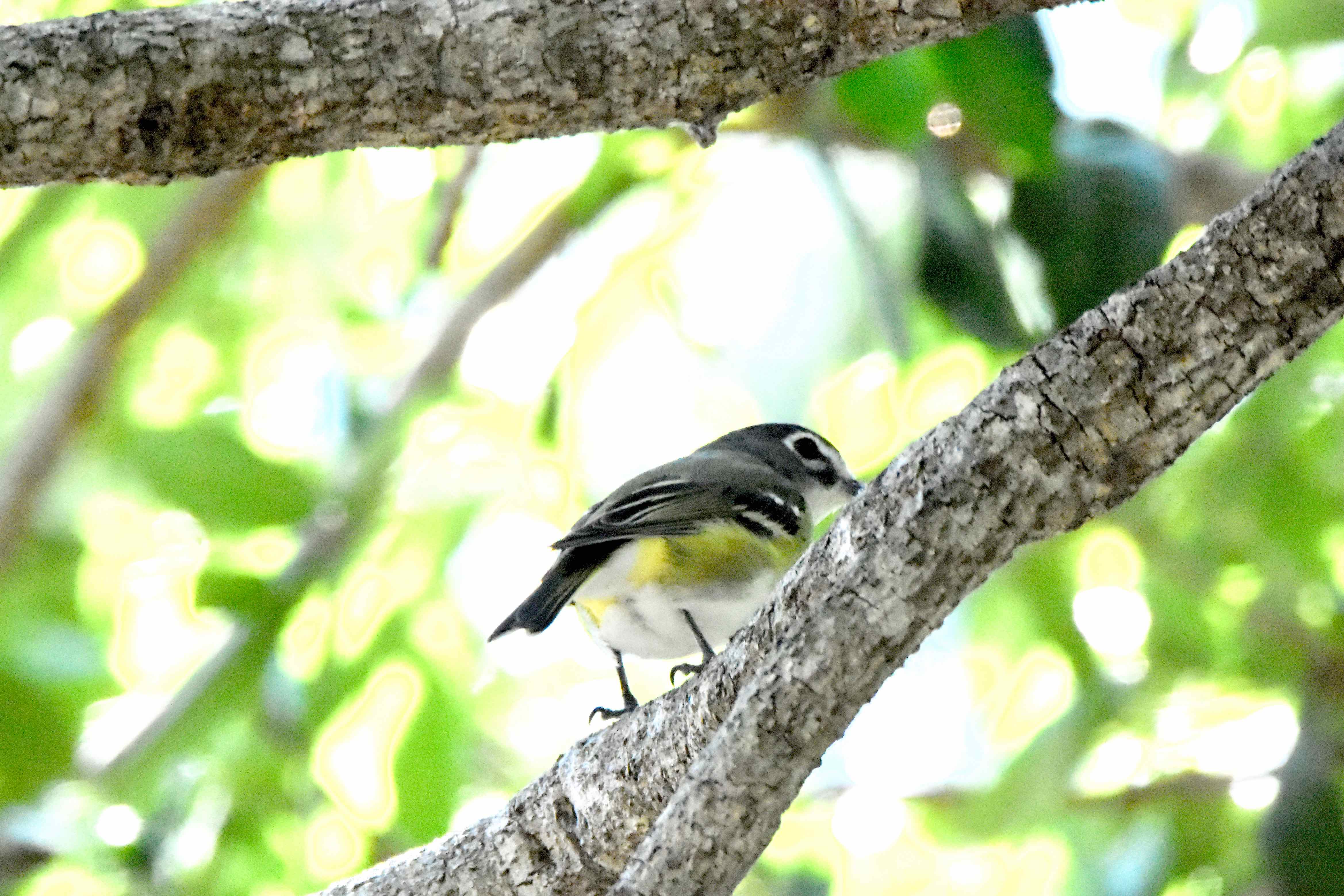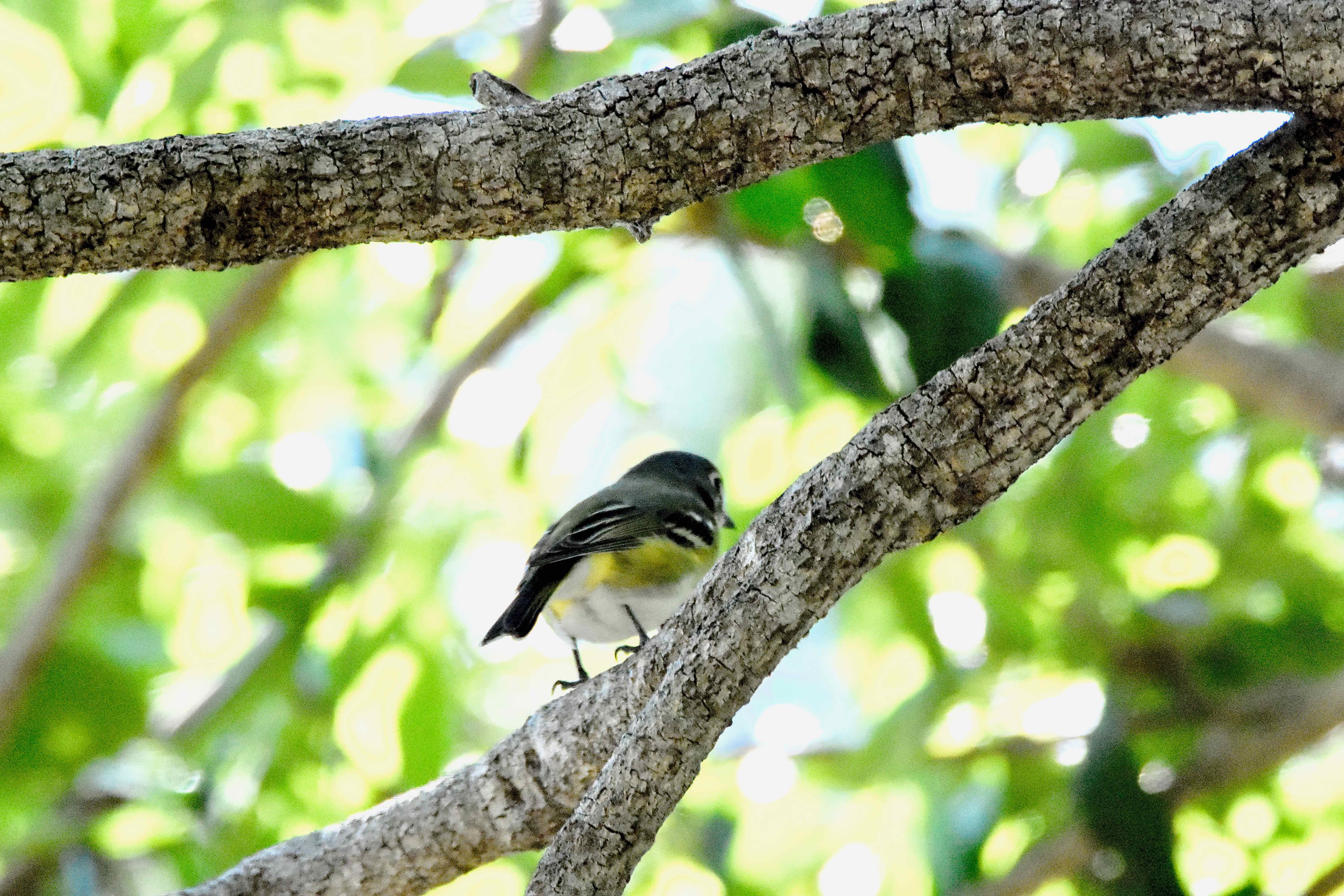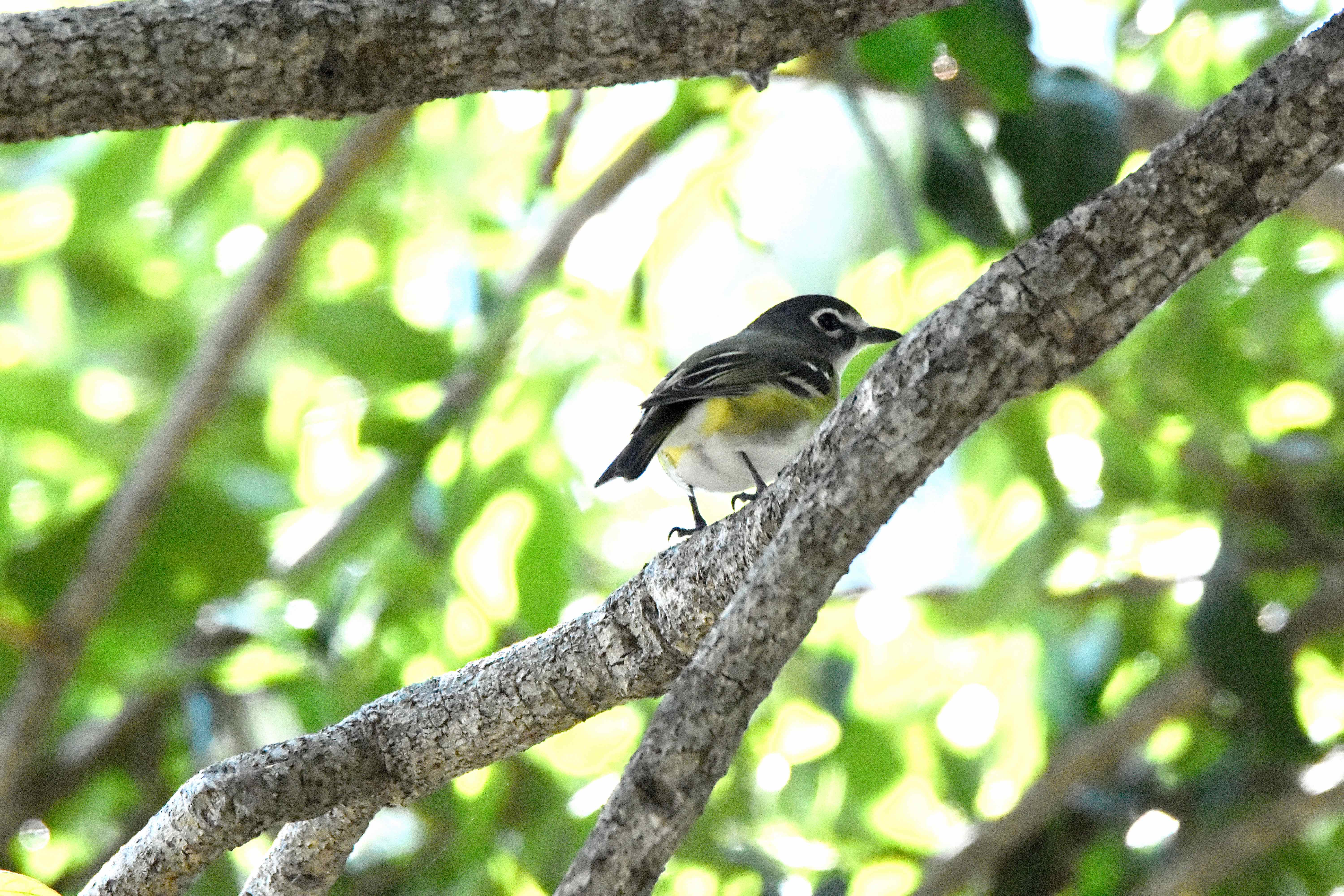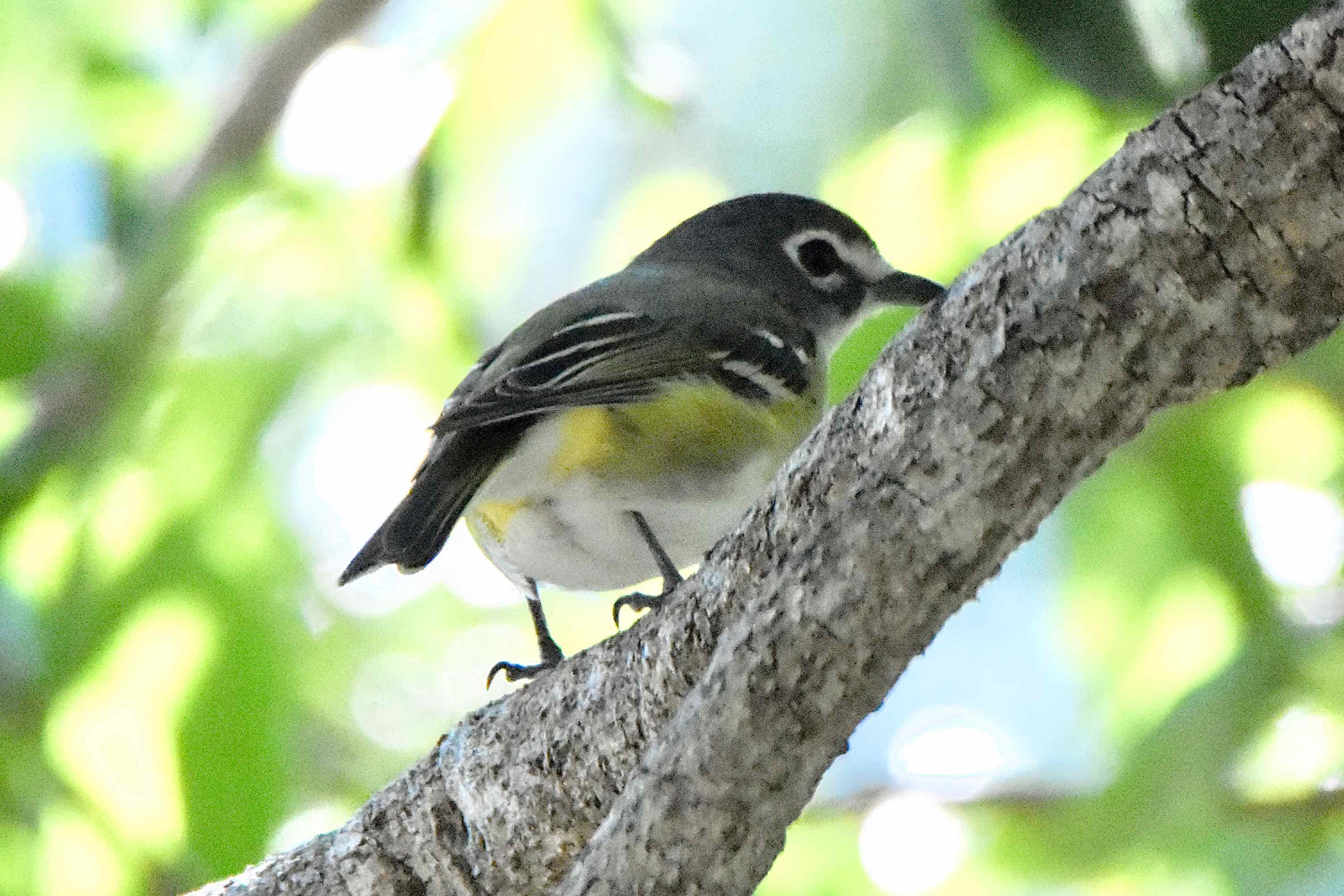
Blue-headed vireo, photographed at Limestone Creek Natural Area, Jupiter, Palm Beach County, in March 2018.
If you see a small, gray and yellow bird with white “glasses,” chances are you’re looking at this bird, the blue-headed vireo.
The blue-headed vireo, known scientifically as Vireo solitarius, is a winter visitor to Florida’s thickets, swamps and woods. In summer, it lives as far north as Canada’s sub-Arctic forests.
The glasses — white eye-rings and a white band that runs from each eye to the bill creating the spectacle of a bird wearing spectacles — is the signature feature and key to identifying the blue-headed vireo. Other vireos sport glasses but the blue-headed is the only one seen in Florida that are white. The others are yellow.
Which brings us to a slight caveat. The blue-headed vireo is one of three members of what’s called the solitary complex of vireos. These birds so closely resemble each other that they were once considered a single species. The other two are Cassin’s vireo and the plumbeous vireo, both of which sport the white eyeglass look. The blue-headed vireo, however, is the only one found this far east: Cassin’s range extends through California, Oregon and Washington into British Columbia, while the plumbeous is found roughly from Montana south to Arizona, New Mexico and west Texas. Both Cassin’s and the plumbeous winter in Southern California, Arizona and western Mexico. In other words, nowhere near Florida. The blue-headed vireo is considered the brightest-colored of the three.
As we said, it’s a small bird, about 5 to 6 inches long, with a wingspan between 8.5 and 9.5 inches. The head is blue-gray, with white glasses on the face. The back is gray; the underside is white with lemon yellow sides. The wings are charcoal gray, with two prominent white bars and some white striping mixed in with a hint of yellow.
Its summer range extends from eastern British Columbia across Canada to Nova Scotia, through the Great Lakes region, down through New England, New York, Pennsylvania and along the Appalachian Mountains as far south as northwest Georgia. A subspecies called the Appalachian race is found south of roughly the Mason-Dixon line, Pennsylvania’s border with West Virginia and Maryland.
Blue-headed vireos winter along the Atlantic coastal plain roughly from the Virginia-North Carolina border, south to Florida, and along the Gulf to Texas, Mexico and Central America.
In summer, they are mostly insectivores, gleaning caterpillars, moths, butterflies and bugs off the branches and leaves of trees. In winter, when the insect supply is low, they’ll compensate by eating more fruit. As much as a quarter of their diet during winter is fruit.
Nesting season runs from April through August. Males begin building multiple nests and stashing nesting materials in hopes of attracting a mate. Once a lady blue-headed vireo finds a guy blue-headed vireo that she likes, the two finish one of the nests, using twigs, grass, bits of roots, feathers and spider and insect silk. Clutches are 3 to 5 eggs; both parents split incubation duties, which last 12 to 14 days. The offspring fledge at two weeks. Both parents feed the kids, but mom will take off before they fledge. Dad finishes raising the brood and they’ll stay with him for about a month after fledging. Both sexes are highly territorial while nesting.
Blue-headed vireos are monogamous while nesting but split afterwards. They sometimes will join mixed-species flocks during migration, but other than during nesting season, they mostly live solitary lives, hence solitarius.
The blue-headed vireo population actually has increased substantially over the last half-century or so, but the birds still are vulnerable to loss of habitat.
Blue-headed vireos are members of Vireonidae, the vireo family.
Limestone Creek Natural Area



